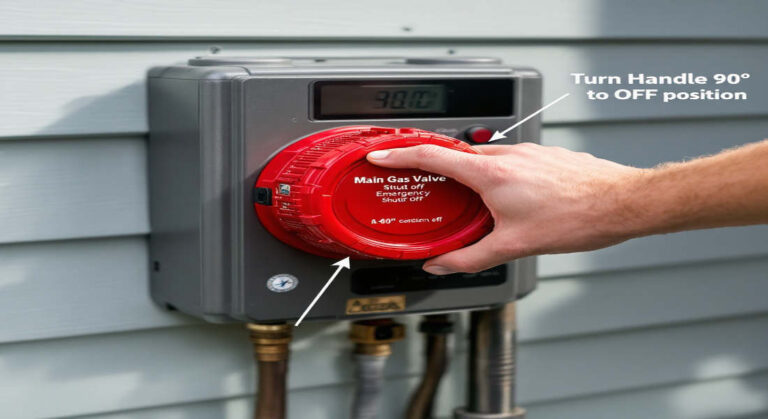Gas is an essential utility in many homes, powering everything from stoves to water heaters and furnaces. However, it’s also a potential safety hazard when not handled properly. Knowing how to turn off the gas line in your house can save lives and prevent catastrophic damage in emergencies.
Gas safety is a critical aspect of homeownership that many people overlook until an emergency arises. Whether you suspect a gas leak, are preparing for renovations, or need to disable the gas line after an earthquake, knowing how to turn off your gas line can prevent fires, explosions, or even fatalities.
Why You Might Need to Turn Off Your Home Gas Line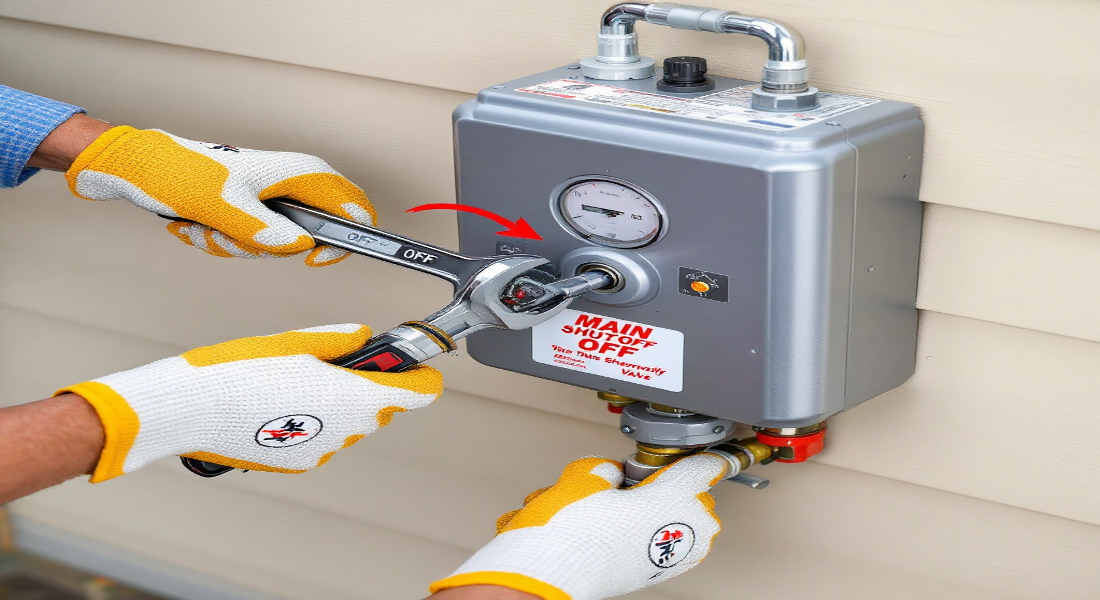
Common Scenarios Requiring Gas Shut-Off
There are several situations where you may need to turn off the gas line in your home, including:
- Suspected Gas Leak: If you smell gas or hear a hissing sound near a gas appliance, it’s crucial to act quickly to prevent a potential fire or explosion.
- Earthquakes or Natural Disasters: Sudden movements can damage gas lines, leading to leaks.
- Home Renovations or Repairs: When working near gas lines or appliances, turning off the gas ensures safety.
- Appliance Maintenance: Gas-powered appliances like stoves or water heaters may require the gas to be turned off during repairs.
Risks of Not Acting Quickly
Failing to shut off the gas line in emergencies can result in:
- Fires and Explosions: A small spark can ignite leaking gas, causing devastating damage.
- Health Hazards: Prolonged exposure to natural gas can lead to nausea, dizziness, and respiratory issues.
- Property Damage: Gas leaks can destroy homes and valuables, requiring costly repairs.
Emergency Preparedness Matters
It’s essential to ensure every member of your household knows where the gas shut-off valve is located and how to operate it. Gas safety isn’t just for adults—it’s a family-wide responsibility.
Gas Safety First: Immediate Steps to Take in an Emergency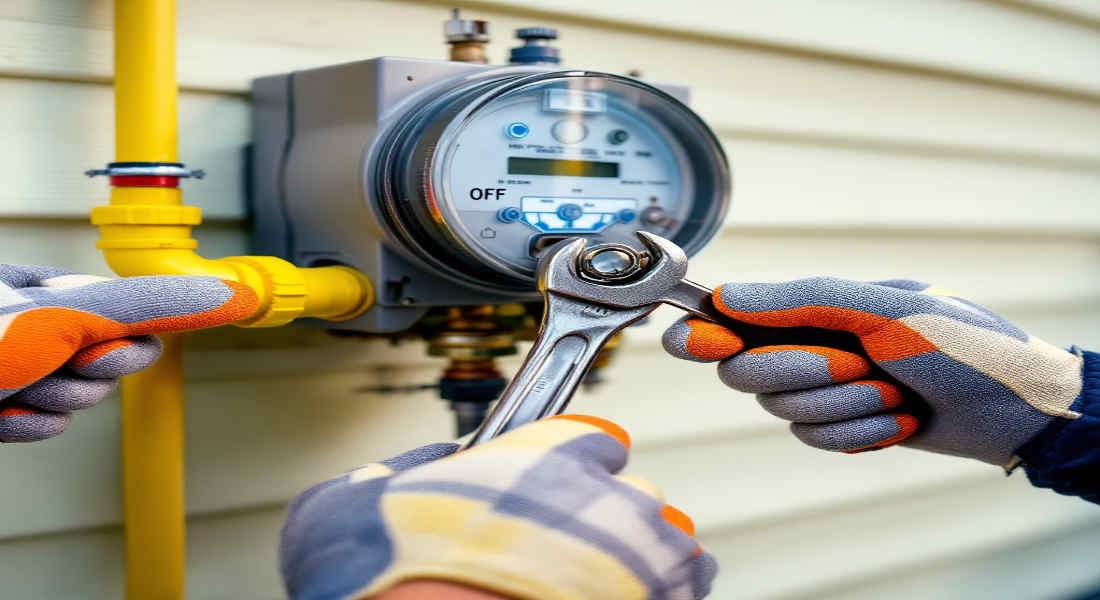
How to Recognize a Gas Leak
Gas leaks aren’t always obvious, but here are some tell-tale signs:
- Smell: A strong odour of rotten eggs indicates a gas leak.
- Sound: A hissing or whistling noise near gas lines or appliances.
- Sight: Visible damage to gas lines or bubbling in standing water near your meter.
You may also read (mastering downspout drainage a homeowners guide).
What to Do Immediately
If you suspect a gas leak, follow these critical steps:
- Evacuate the House: Get everyone, including pets, out of the house immediately.
- Avoid Sparks: Do not turn on or off any electrical devices, including lights or phones, as they can create sparks.
- Ventilate the Area: Open windows and doors to disperse gas.
- Call for Help: Contact your local gas supplier or emergency services from a safe location.
Emergency Contacts
Keep these numbers handy:
- Local gas supplier’s emergency line
- Fire department
- National emergency services (e.g., 911)
Understanding Your Home’s Gas System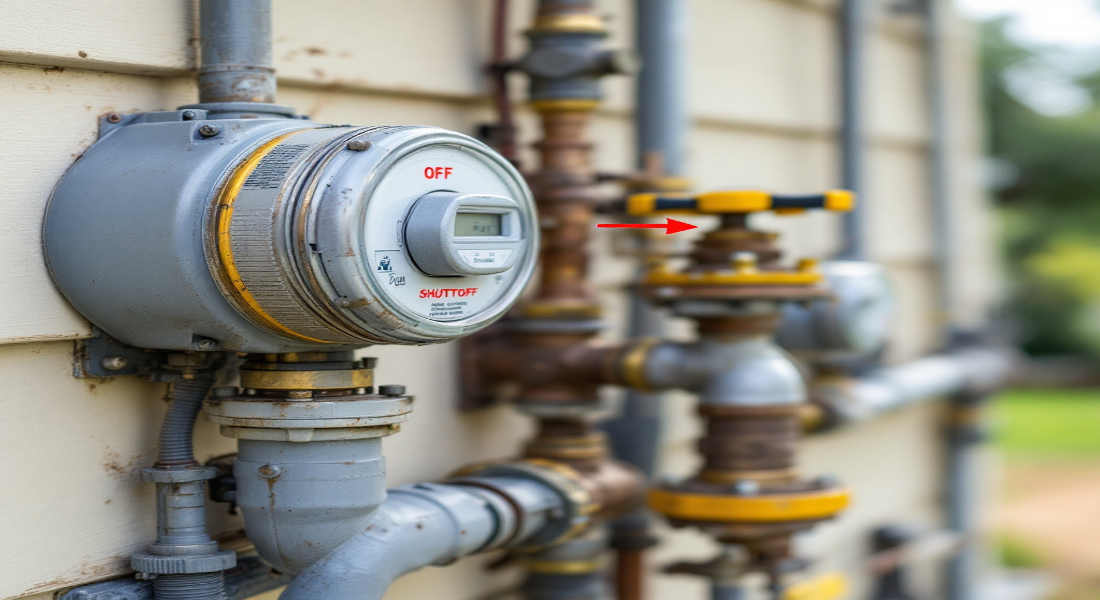
Before you can turn off the gas, it’s helpful to understand how your home’s gas system works.
Natural Gas vs. Propane
Most homes use either natural gas or propane. While these fuels differ, both systems have shut-off valves that control the flow of gas.
Key Components of a Gas System
- Gas Meter: Tracks your gas usage and often houses the main shut-off valve.
- Shut-Off Valve: Located near the gas meter, this valve controls the flow of gas into your home.
- Street-Side vs. House-Side Valves: The street-side valve is managed by your utility company, while the house-side valve is for homeowner use.
Where to Find the Gas Meter
Gas meters are typically located:
- On an exterior wall close to the street
- In the garage or basement
- Near the side or back of the house
You may also read (does my house need to be tidy for valuation).
Locating the Gas Shut-Off Valve in Your House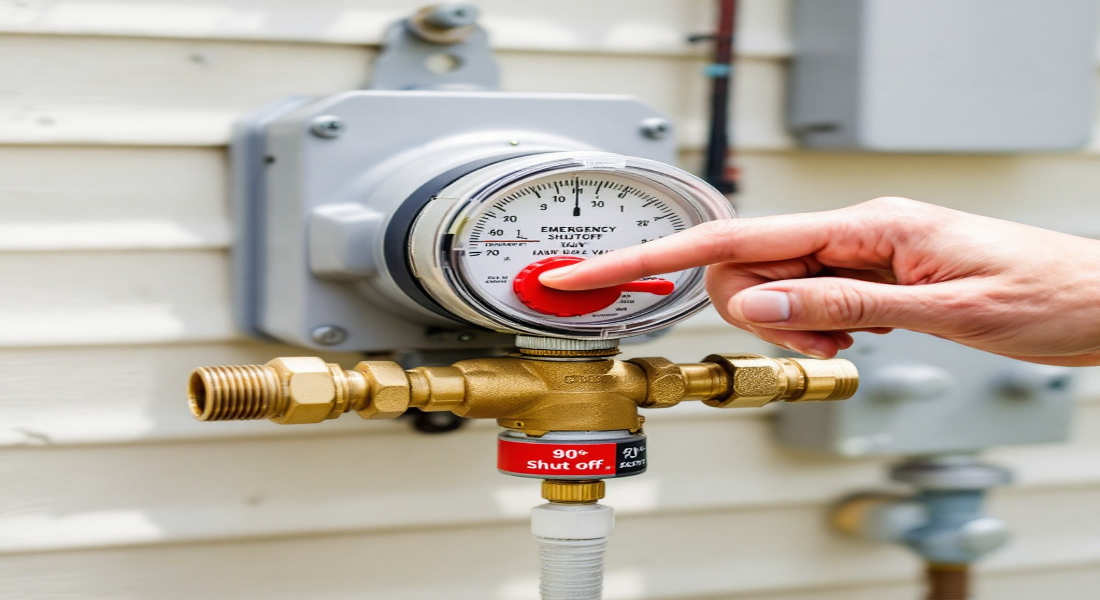
Step-by-Step Guide
- Find the Gas Meter: Look for the gas meter outside your home or in your basement/garage.
- Locate the Valve: The valve is typically a small lever or knob located near the meter.
- Mark It: Use brightly coloured tape or a tag to make the valve easy to spot during emergencies.
Tools Needed to Turn Off the Gas Line
Essential Tools
- Adjustable Wrench: A 12-inch or larger wrench is ideal for most valves.
- Gas Key: A specialized tool designed for turning off gas valves.
- Pliers: A sturdy pair of pliers can also work in a pinch.
Tool Storage Tips
Store your wrench or gas key in an accessible location, such as:
- Near your gas meter (but not attached to it)
- In an emergency preparedness kit
Step-by-Step Instructions: How to Turn Off Gas Line in House
Preparation
- Turn off all gas appliances and extinguish pilot lights.
- Stand to the side of the valve to avoid exposure to escaping gas.
Turning Off the Valve
- Place the wrench or gas key on the shut-off valve.
- Turn the valve 1/4 turn (90 degrees) until it is perpendicular to the pipe.
- Confirm the gas is off by checking the handle position.
After Shutting Off the Gas
- Do not attempt to turn the gas back on yourself.
- Contact your gas company for a professional inspection and safe restoration of service.
Special Situations and Advanced Tips
- If the Valve Is Stuck: Use penetrating oil to loosen it, or call a professional.
- Multi-Unit Buildings: Consult your building manager for guidance.
- Seasonal Shut-Offs: If leaving your home vacant, consider turning off the gas supply.
What NOT to Do When Turning Off the Gas Line
- Never use open flames near a suspected leak.
- Do not force the valve if it’s stuck.
- Avoid DIY repairs on gas lines or appliances.
Preventive Measures and Family Preparedness
- Conduct regular drills with your family to locate and operate the shut-off valve.
- Post emergency numbers and instructions in a visible spot.
- Schedule annual gas inspections with licensed professionals.
You may also read (need to rewire your house).

